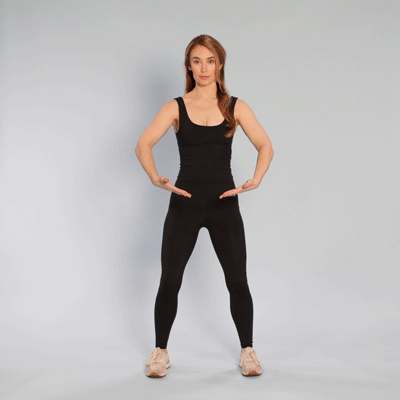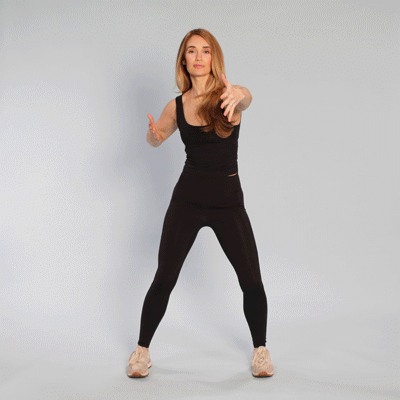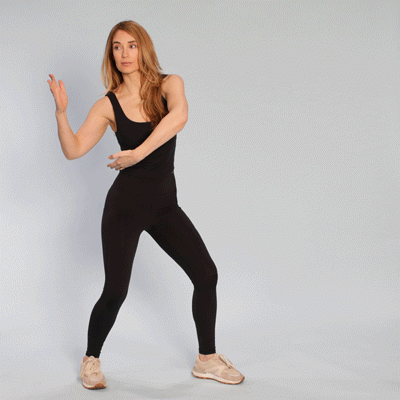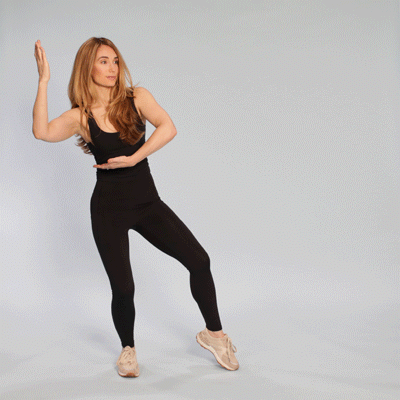Tai chi is a meditative movement practice that offers a safe and effective way to improve bone health and manage symptoms of osteoporosis.
Tai chi is a low impact activity that involves gentle, flowing movements and deep breathing techniques. It is often associated with traditional Chinese medicine, though it has become more widely practiced today.
The practice of tai chi can help improve balance, flexibility, and muscle strength. It may also help reduce bone loss and boost mobility.
These benefits are particularly important if you live with osteoporosis. Practicing tai chi can help reduce the risk of falls and fractures.
One of the conveniences of tai chi is that you can practice it independently at home. This gives you flexibility in adding it to your daily routine.
To receive support and ensure you’re using the correct technique, consider joining a guided class in person or online, if available.
Here’s a sample tai chi routine you can follow to get started. Start slowly and focus on your movements and breathing. As you become more comfortable, you can gradually increase the duration and complexity of the routine.
Opening and Closing

- Sit or stand with your feet shoulder-width apart.
- Keep your knees slightly bent.
- Let your arms hang naturally at your sides, with your palms facing your thighs.
- Inhale while raising your arms to chest level, with your palms facing up.
- Exhale while lowering your arms, with your palms facing downward.
- Continue this movement at a comfortable pace, coordinating it with your breath.
Cloud Hands

- Sit or stand with your feet shoulder-width apart, knees slightly bent and your arms at your sides.
- Shift your weight to your left leg, lifting your right heel slightly.
- Extend your right hand forward with your palm facing down.
- Bring your left hand in front of you at chest level, with your palm facing up.
- Turn your torso to the left, maintaining a relaxed posture, and let your arms follow your body’s movement. As you move, turn the palm of your left hand so that it is facing your chest and let your right arm scoop downward.
- As you complete the turn to the left, shift your weight to your right leg, lifting your left heel slightly.
- Now extend your right hand forward, with your palm facing up at chest level. Simultaneously, lower your left hand slightly and turn it so that the palm is facing down.
- Turn your upper body to the right and let your arms follow. As you move, turn your right hand so the palm is facing toward you and allow your left hand to scoop downward, continuing the circular motion.
- Repeat this smooth, continuous motion to the right and left, coordinating it with your breath.
Repulse Monkey

- Stand with your feet shoulder-width apart, knees slightly bent, and arms at your sides.
- Shift your weight to your right leg, lifting your left heel slightly.
- Extend your right arm forward, with your palm facing down. Simultaneously, raise your left hand to chest level, with your palm facing up.
- Rotate your torso to the right, shifting your weight to your left leg.
- Continue this circular motion, moving your arms to the right side.
- Extend your left hand forward with your palm facing down. Simultaneously, bring your right hand to your chest with your palm facing up.
- Rotate your torso to the left, continuing the circular motion. Shift your weight to your right leg as you turn to the left.
- Continue this flowing motion to the right and left, coordinating it with your breath.
Grasp the Sparrow’s Tail

- Stand with your feet shoulder-width apart and arms by your sides.
- Shift your weight onto your right leg and rotate your torso to the right.
- Extend your right arm forward with your palm up and your left arm backward with your palm down.
- Shift your weight onto your left leg.
- Move your right hand to your left forearm and lift your left hand upward with the palm up.
- Shift your weight forward to your right leg.
- Push your right hand forward, followed by your left hand with palms facing down.
Brush Knee Twist Step

- Stand up straight with your arms at your sides.
- Shift your weight onto your right leg while lifting your left heel slightly.
- Rotate your upper body and arms to the right.
- Take a step forward with your left foot.
- As you step forward, your right hand should brush past your left forearm.
- Continue the movement until both feet are firmly on the ground and your arms are extended.
- Repeat on the other side, shifting weight to your left leg and stepping forward with your right foot.
Tai chi is a low impact, weight-bearing exercise that can potentially slow down or prevent bone loss. The flowing, intentional movements promote muscle engagement, supporting overall bone health.
Additionally, tai chi emphasizes mindfulness and relaxation, offering potential relief from stress. This can be particularly beneficial for managing the emotional aspects of osteoporosis.
While research on the benefits of tai chi for osteoporosis is promising, researchers note the need for more rigorous studies. Here’s a look at what some of the recent research shows.
A
According to
A
However, a 2023 research review found limited certainty regarding the effects of tai chi on bone mineral density in older adults and perimenopausal and postmenopausal women.
Tai chi offers a low impact, accessible way to improve balance, flexibility, and muscle strength. This may reduce bone loss and enhance mobility — essential for osteoporosis management.
Perform tai chi movements slowly and gracefully, with a sense of relaxation and balance, moving at your own pace. With patience and consistency, tai chi can be a valuable tool in your osteoporosis management plan.
For personalized guidance, reach out to a healthcare professional or tai chi instructor.

